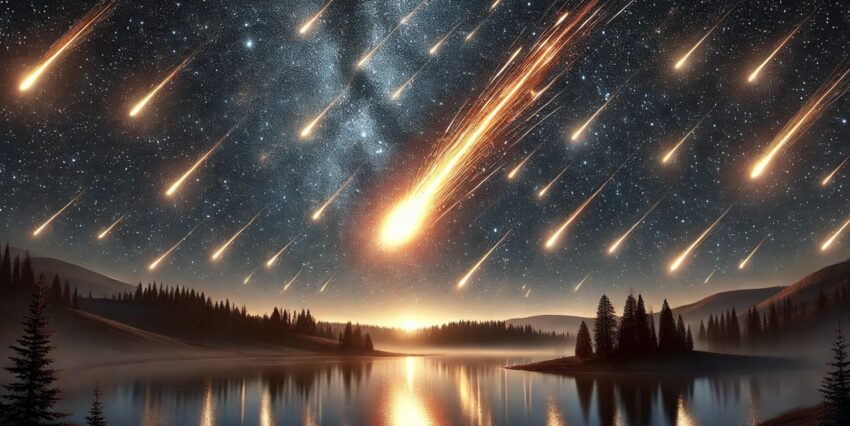| Listen to our audio presentation: Quantum Entanglement |
Meteors, also known as “shooting stars,” have captivated human imagination for centuries. These streaks of light flashing across the night sky are not stars but small fragments of cosmic debris that burn up as they enter Earth’s atmosphere. But where do meteors come from, and why do they create such mesmerizing displays?
- Meteors and Their Origins: Meteors, commonly called “shooting stars,” are the result of meteoroids—fragments of asteroids or comets—burning up as they enter Earth’s atmosphere.
- Sources of Meteoroids: Asteroids contribute rocky fragments, while comets leave behind trails of ice and dust particles that Earth passes through, often leading to meteor showers.
- Meteor Showers: Notable showers include the Perseids, Leonids, and Geminids, linked to the debris of comets and, in the case of the Geminids, an asteroid.
- Scientific Importance: Meteorites that survive the descent provide insights into the materials and processes of the early solar system.
The Origins of Meteors
Meteors originate from space debris, primarily from two sources: asteroids and comets. These fragments, called meteoroids, are small rocks or particles that drift through space. When a meteoroid enters Earth’s atmosphere, it heats up due to friction with air molecules, producing the bright streak of light we call a meteor.
Asteroids: The Source of Many Meteors
Asteroids are rocky remnants from the early solar system, mostly found in the asteroid belt between Mars and Jupiter. Occasionally, collisions between asteroids send fragments hurtling into space. These fragments, if they cross Earth’s orbit, can become meteoroids and eventually meteors when they enter our atmosphere.
Comets: The Ice and Dust Trailblazers
Comets, made of ice, dust, and gas, originate from the outer regions of the solar system. As they approach the Sun, the heat causes them to release particles, creating a glowing tail. Some of these particles linger in space, forming trails that Earth passes through during its orbit. When this happens, we experience meteor showers, such as the famous Perseids or Leonids.
The Role of Interplanetary Dust
In addition to asteroid and comet fragments, interplanetary dust particles contribute to meteors. These tiny grains are remnants of cosmic collisions and ancient processes in the solar system. While they often produce fainter meteors, they are an integral part of the phenomena we observe.
What Happens to Meteors?
Most meteoroids disintegrate entirely during their fiery descent. However, some larger fragments survive the journey through the atmosphere and land on Earth as meteorites. These meteorites provide valuable scientific insights into the early solar system and the materials that shaped our planet.
Why Do We Call Them “Shooting Stars”?
The term “shooting star” stems from their resemblance to stars streaking through the sky. However, meteors are far closer to Earth than stars, typically burning up in the mesosphere, about 50-85 kilometers (31-53 miles) above the surface.
A Connection to the Cosmos
Whether they come from rocky asteroids or icy comets, meteors are a reminder of Earth’s connection to the vast cosmos. Their fleeting beauty continues to inspire awe, curiosity, and a desire to explore the mysteries of the universe.
Famous Meteor Showers
Several annual meteor showers occur when Earth moves through debris left behind by comets. These include:
- Perseids: Originating from the comet Swift-Tuttle, the Perseids light up the sky each August.
- Leonids: Created by debris from comet Tempel-Tuttle, the Leonids peak in November.
- Geminids: Unusual for coming from an asteroid (3200 Phaethon), the Geminids peak in December.

